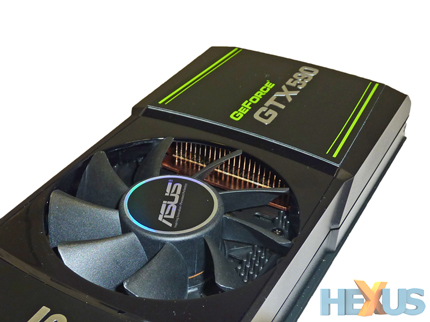Champ or chump?
Keeping it a lid on it
Put on the kettle, make yourself comfortable, because you're about to find out which is the fastest graphics card in the world, dear reader.
NVIDIA and AMD know all too well that the path to performance domination of the consumer PC graphics market can only be trod if two high-end GPUs are placed onto one board and set to communicate with one another via established multi-GPU technology.
The main obstacle in creating this two-GPU behemoth isn't technical, for the architecture has already been defined and delivered in single-GPU cards. At the time of writing, these GPUs are the GeForce GTX 570/580 and Radeon HD 6950/70 for NVIDIA and AMD, respectively.
Instead, the problem facing designers is how best to reconcile the competing interests of performance and overall power-draw. NVIDIA's men in white coats - lab rats - could easily create a dual-GPU card composed of two full-speed GTX 580 GPUs, but such would be the power-draw, perhaps as much as 600W, that men in different white coats would be called to restore a modicum of sanity to NV Testing HQ.
You see, any marketable card needs to temper power-draw to <450W, and the reason for this lies with pragmatism over enthusiast zeal. 12V power delivery from most PSUs, PCIe power-draw, chassis design and top-line air-cooling align to force GPUs to keep under this somewhat arbitrary figure. One could always steal a few watts here or there, yet having a fairly quiet card inextricably puts a lid on just how much juice it call pull.
Power play
NVIDIA's GeForce GTX 580 card - clocked in at 772MHz core and 4,008MHz memory - pulls an average 244W load when running at full chat. Putting two such GPUs on one board will push the boundaries of what's possible, bearing in mind the discussion above, even if the GPUs are screened to run at those speeds at lower-than-normal voltage settings.
The firm does indeed put two GTX 580-like cores on the GeForce GTX 590, which is the retail name for the dual-GPU monster released today. Each of its two GPUs is exactly the same as a GTX 580 in terms of underlying design. This means they have 512 cores, 64 texture-units, 48 ROPs and a 384-bit memory interface to 1,536MB of GDDR5 RAM, per GPU. Note, too, the memory is exclusive to each GPU; it cannot be combined.
However, instead of opting for balls-out performance by keeping frequencies close to GTX 580 levels, NVIDIA plays the game very safe by dialling the clocks down to 607MHz core and 3,414MHz memory, representing a 21.4 and 14.8 percent reduction in the two headline figures.
The two GPUs are connected together via an on-PCB PCIe 2.0 x16 interface - NF200 bridge chip, actually - and combined via NVIDIA's SLI technology. The marked reduction of the frequencies when compared to the single-GPU champ are in contrast to AMD, which keeps the also-dual-GPU Radeon HD 6990 (OC) pretty close to the clocks of its top-line HD 6970.
NVIDIA, then, wants to deliver a well-balanced, elite card that ticks all the boxes - heat, fan noise, form factor - not just performance. We're adamant that it could clock the GTX 590 higher, to 700MHz core and 4,000MHz memory, yet leaves it to the enthusiast to while away the hours of solitude, tinkering to their heart's delight.
As it is, the card ships with a 365W 'average' TDP, coming in below the Radeon HD 6990 in its stock mode. Now, one company's TDP isn't exactly the same as another's, so the only method of verifying power consumption is to draw on empirical research - and we've done just that in the benchmarks.
Making sure that the board doesn't implode when you run a GPU-bashing game, NVIDIA outfits the GTX 590 with a refined version of its power management technology first seen on the GTX 580.
State of play
Our benchmarks show that the single-GPU GeForce GTX 580 is comfortably faster than the AMD Radeon HD 6970. We've previously shown that the two-mode, dual-GPU Radeon HD 6990 OC, which is near-double the speed of the HD 6970, scales pretty damn well. We also now know that the GTX 590 takes two GTX 580-like GPUs and clocks them down by a fair margin.
Do the math, conjecture somewhat, and an intriguing question begins to nag. Is a GeForce GTX 590 - the absolute fastest graphics card NVIDIA has ever built - speedier than the best graphics card ever built by bitter rival AMD? Spicing up matters, both cards are tip-top models released in the very same month.
Yes, sir, NVIDIA's conservative clocking of the GTX 590 opens a door for the Radeon HD 6990 OC to keep the undisputed heavyweight champ - on points, if nothing else.
First-page summary
If you take away just one fact from this page, let it is be this: NVIDIA's GeForce GTX 590 3,072MB is a dual-GPU card that takes in two reduced-speed GTX 580 cores on to one PCB, tying them together via SLI.










